TRIBUTE:Reclaim the Earth
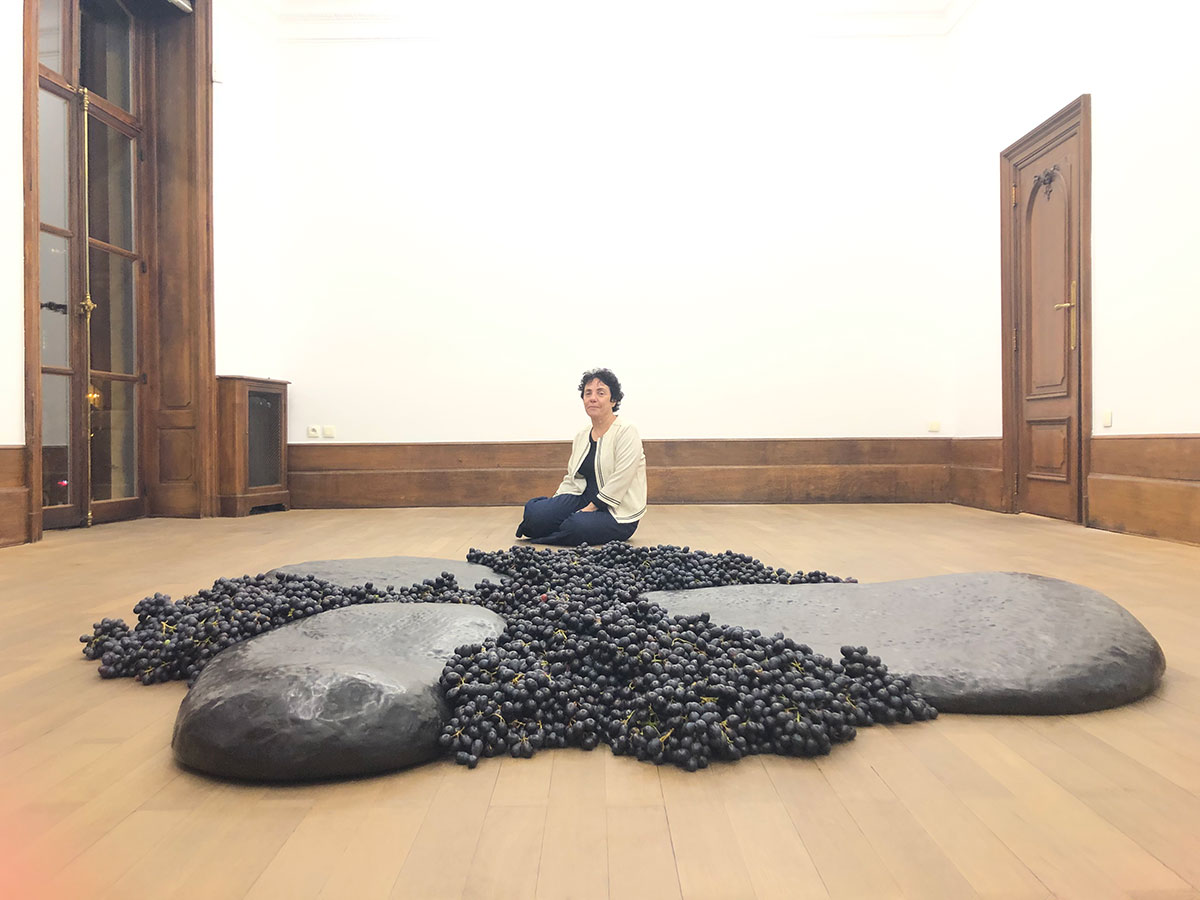 The “Reclaim the Earth” program at the Palais de Tokyo addresses the relationship between body and earth, the extinction of animal and plant species, the amplification of marginalized narratives and forms of knowledge, along with the spirits of nature, biological energies, agriculture, gardening and winemaking. It resonates with these questions which seem disparate and yet somehow form a whole. Passing from art to craft by way of activist practices, this season constitutes an ecosystem of forms in its own right, starting out from an ecological reflection without a predetermined end in mind, but rather another way to share other energies and forces that animate the forms and ideas of the present.
The “Reclaim the Earth” program at the Palais de Tokyo addresses the relationship between body and earth, the extinction of animal and plant species, the amplification of marginalized narratives and forms of knowledge, along with the spirits of nature, biological energies, agriculture, gardening and winemaking. It resonates with these questions which seem disparate and yet somehow form a whole. Passing from art to craft by way of activist practices, this season constitutes an ecosystem of forms in its own right, starting out from an ecological reflection without a predetermined end in mind, but rather another way to share other energies and forces that animate the forms and ideas of the present.
By Dimitris Lempesis
Photo: Palais de Tokyo Archive
In the main exhibition of “Reclaim the Earth” program at the Palais de Tokyo, fourteen artists, from different generations and cultural origins, examine links between body and land, our primordial human relation to soil and everything it nurtures, the disappearance of certain species, the transmission of Indigenous stories and knowledges, gleaning and collecting, or social justice and collective healing. These artists show us that we are not just “face to face with a landscape,” nor “living on Earth” but a part of it. We are indeed part of the great “soil community” as spoken by Rachel Carson, who gave birth to the ecology movement. We need to replace relations of domination and subordination, and to consider instead kinship and alliances, as “the Earth is neither a natural reserve, nor an agricultural resource, it is a skein of relationships between minerals, plants, animals and humans.” Our era needs to leave behind the obsolete model of an extractivist society and put humans back into their right place; no longer individuals separated from their environments, but “relational entities”.
The work of Abbas Akhavan ranges from site-specific ephemeral installations to drawing, video, sculpture and performance. The direction of his research has been deeply influenced by the specificity of the sites where he works: the architectures that house them, the economies that surround them, and the people that frequent them. The artist presents a special kind of war memorial: “Study for a Monument” (2013-ongoing) is devoted to the species of vegetation that are native and endemic to the banks of the Tigris and the Euphrates. This region, currently Iraq, has suffered considerably from social, political and ecological disturbances over the past decades. Sculpted in bronze after botanical photographs, enlarged flowers, stalks, leaves and roots are spread out across the floor, as opposed to the verticality of traditional monuments. Laid out on white sheets, like legal evidence, these bronze fragments evoke shards of shells, grenades or spears. The rich history of bronze in relation to weaponry, tools, monuments and memorials, is recalled here. The Inuk artist, film director and curator asinnajaq practices video, digital illustration, photography and installation, and sees collaboration and collective research with her family and other artists as crucial to her creative process. Through her work she retraces historical representations of the polar circle region, deconstructing the standard, erroneous perception of the Arctic landscape as frozen and sterile. Delving into indigenous knowledge and giving a voice to those who had been silenced, she presents a land full of life. The exploration of her cultural heritage and her wide-ranging research at the National Film Board of Canada have enabled her to analyse the evolution of representations, ritual practices and the history of Inuit art. These archival studies have given rise to works like the performance video ‘Rock Piece (Ahuriri edition)” (2018), which retraces the links between the body and land and explores the many meanings of such ceremonial gestures as the arranging of stones on somebody’s body to symbolise the cycle of life and death. Matter and the hand: two core elements of Huma Bhabha’s practice. The former emanates a force – a power – shaped and instilled by the latter. This hand accumulates materials such as polystyrene, cork, bronze, wood and clay, and brings them together in a solid armature that the artist works and reworks until all the possible combinations have been tried and the final form arrived at. These polysemic works are shot through with references drawn from Huma Bhabha’s hometown, as well as from modern art, archaic Greek sculpture, Buddhist iconography, science fiction and horror movies. With “The Past is a Foreign Country” (2019), “Receiver” (2019) and “God of Some Things” (2011), Huma Bhabha rethinks the traditional forms of figurative sculpture. She depicts anthropomorphic characters whose gritty appearance can sometimes seem altered or unfinished, and whose intensity is reinforced by their monumental scale. The three sculptures, that look at us as much as they are looked at, are gathered like totems or lookouts and guide the visitors.
Sebastián Calfuqueo are from Mapuche origin. Their work appeals to their inheritance to propose a critical reflection on the social, cultural, and political status of the Mapuche subject in the contemporary Chilean society as well as in Latin America. It includes installations, ceramics, performance, and video art to explore the cultural similarities and differences but also the stereotypes produced from the cross between indigenous and western ways of thinking. Their research has also the purpose of making visible feminist and sexual dissidence issues. Sebastián Calfuqueo are part of the Mapuche collective Rangiñtulewfü, which edits YeneRevista, online magazine of art, thought and writing in Wallmapu and AbyaYala language. The short video “Kowkülen (Liquid Being)” (2020) goes through a bodily, personal and poetic journey regarding the water, wetlands, lakes, oceans, rivers and springs. It addresses the concepts of body, binarism, gender, sexuality, the historical relationship between water and life, as well as their potential as a living space, necessary to the relationship of all territories. Megan Cope is a Quandamooka woman from Moreton Bay, South-East Queensland. Her site-specific sculptural installations, video works, and paintings investigate issues relating to identity, the environment and mapping practices; but also propositions of potential futures alluding to climate change, land ownership and migration. Created in 2020 for the Adelaide Biennial, her installation “Untitled (Death Song)” takes as its starting point the ghostly, wailing call of the bush stone curlew, a threatened bird species in many parts of Australia. Megan Cope interprets their song as a metaphor for the cry of our endangered planet, alerting us to today’s environmental problems and the point of no return we are approaching. Composed of five large-scale sculptural instruments built from discarded mining and industrial equipment together with local natural elements, the installation is conceived to be activated punctually by musicians following a specifically composed score. Installations, sculptures, paintings, or site-specific interventions: D Harding’s works are imbued with the history of Queensland’s Aboriginal peoples. Recent bodies of work have sought to further the cultural inheritances of Bidjara, Ghungalu and Garingbal artforms including those originating in rock art traditions. The cultural landscape across Harding’s ancestral territories and the spiritual and philosophical sensibilities of their communities inform what he describes as cultural continuum. As a result of numerous stays in Central Queensland, D Harding creates wool felt ‘blankets’, in the lineage of the ancestral cloaks made of possum skin. Saturated with earth pigments and gum Arabic, these felt works become the vessels carrying the pigments around the world. Once rehydrated, the wool revives and releases its contents. Site specifically produced, the wall painting laden with the lands of their ancestors guides visitors to the exhibition space.
Based in Australia’s Northern Territory, the Karrabing Film Collective counts some thirty Indigenous filmmakers of all generations. Their cinematic corpus resuscitates a complex network of practices and relationships: with Earth, geology, ancestors, human and non-human life, and visual culture. Elizabeth Povinelli, professor of Anthropology and Gender Studies at Columbia University (New York), is a long-time member of the collective. Together they have come up with a unique, baroque film corpus, a skilful blend of satire and political/legal subversion in defence of their identity, their rights, and the power of the imagination. “The Family and the Zombie” (2021) is a video featuring Aboriginal children playing in lush green overgrowth that gradually turns into a wasteland. Conceived as a zombie film, the work reveals the toxic dangers of unbridled Western consumption and questions the cultural erasure caused by colonialism. The screening It is surrounded by a landscape of scrap cars, tires, and other postindustrial detritus. A keen-eyed observer of the world around her, Kate Newby is a gleaner and collector of objects, materials and fragments picked up during her wanderings. She is especially attentive to the outdoor environment: light, rain, sun, and wind thus become active components of her work. Speculating about the nature of sculpture and its connection with the natural world, the artist mostly uses ceramics and glass, from which she produces works and architectural interventions. Close observation of her works demands a special attention, a spatial commitment that triggers a poetic encounter and a rediscovery of everyday objects. Kate Newby has adopted a craft approach to local materials, in relationship with the institution inviting her. She nourishes herself with the most intimate details, from the informal uses of the public space to the tiniest glitches in the architecture. Her works take care of the building that hosts them, they reappropriate the space and call for particular attention. The artist imagines several site-specific gestures in and out of the Palais de Tokyo, dialoguing subtly with its monumentality while blurring the boundaries between inside and outside. Daniela Ortiz conceives visual narratives in which concepts of nationality, racialisation, social class and gender are explored to critically understand structures of colonial, patriarchal and capitalist power. Between ex-voto and naive art, her paintings poetically and humorously blend ironic antiracist narratives with historical sketches. In her recent works, the artist is interested in places built during the 19th century (botanical gardens, greenhouses, zoos) that advocate the narrative of an industrial, developed and civilised Europe. Initiated in 2020, “The Rebellion of the Roots” series reverses the course of these narratives. Daniela Ortiz depicts scenes presenting tropical plants that, “kidnapped” according to her in botanical gardens, find their own way to confront the politicians and authorities responsible for these crimes, to ensure justice. Through these small formats, the artist instills a spirit of resistance and calls for the need of supporting existing anticolonial struggles.
Solange Pessoa is from the Brazilian state of Minas Gerais, high place of the colonial baroque now an industrial force ‘thanks’ to its activities of iron extraction. The natural world, a core part of her prolific œuvre, is found both in the subjects represented and in the creative process, especially with materials found on her family farm. Organic matter (earth, moss, leather, wax, feathers, hair, blood, fat…) becomes a medium whose natural evolution transforms the works they compose – full of life, they grow, and sometimes fall, dying to the rhythm of the human, animal, and plant kingdoms. Her work suggests temporal collapse, between the present and a distant past, having in common the release of primal energies. For Solange Pessoa, each material phenomenon has a form of agency, in an animist reading of the world. Her soapstone sculptures summon ancestral forms (spirals, fossils) or corporeal interiors (uteruses, entrails). They communicate with the monumental installation “Cathedral “(1990-2003). Both suspended and anchored in the ground, it evokes ghostly horses, distant memories of colonization. Tabita Rezaire and Yussef Agbo-Ola have collaborated to create “Nono: Soil Temple”, a contemplative architecture designed to awaken ecological consciousness. Conceived as a spiritual entity, this sacred space invokes the healing power of soil, and calls on its ability to transform, nurture and release life. It invites us to energise the soil through our chanting, dancing and praying, but even more so to let ourselves be mothered by the womb of the Earth. The installation is accompanied by Soil lungs in iron ash, an immersive sound work inspired by the multi-layered conversations between botanical, geological, microbial, and unseen entities found in the soil.
Of Kokatha and Nukunu Aboriginal origin, Yhonnie Scarce works on the political nature of glass. Her recent creations are particularly interested in the crystallisation of desert sand following the nuclear tests carried out by the United Kingdom in South Australia from 1956 to 1963, contaminating soldiers, Aboriginal populations, and the surrounding nature in the process. This research resonates with the nuclear tests carried out by France in the Pacific: from 1966 to 1996, one hundred and ninety-three nuclear tests were organized in French Polynesia. The repercussions of these tests carried out remotely from their promoters are still felt today in the concerned territories. Yhonnie Scarce imagines a new work, which evokes both a radioactive cloud and a waterfall. Hundreds of hand-blown glass yams (a primary vegetable in Aboriginal food and a symbol of the connection to country) hang from the ceiling, evoking inverted water drops and revealing the numerous human and ecological losses associated with nuclear explosions – so hot that they turned the ground into glass. This solid and fragile installation, made of a resilient material, pays tribute to the human and non-human victims of nuclear colonisation. “De Vert à Orange – Espèces Exotiques Envahissantes” a subjective “herbarium”, presents plant species photographed in 2015 by Thu-Van Tran as she crossed the Amazon in search of a rubber plantation. During this journey, she encounters a dense nature that she reconstitutes here in the form of an immersive panorama, supplementing it with images taken in French tropical greenhouses. Both an archive and a sensory space, she composes a landscape that resists, and which, in its material and retinal persistence, reminds us of its resilience. Closely tied to Aboriginal conceptions of the world, Judy Watson’s works pursue and merge old and new references, to Australia’s or her Indigenous ancestors’ history. Heir to a certain past in the Waanyi territory and peoples, her practice is committed, timeless, and almost holistic. Her creative process leaves room for the accidental and the random, and for the effects of time, environment, and natural material on her work in a context of deep climate change. The artist’s method evolves by working from site and memory, revealing Indigenous histories, following lines of emotional and physical topography. Judy Watson presents a set of new and overlaid paintings relating to water, its memory and its connection to people and place.
Participating Artists: Abbas Akhavan, Amakaba x Olaniyi Studio, asinnajaq, Huma Bhabha, Sebastián Calfuqueo, Megan Cope, D Harding, Karrabing Film Collective, Kate Newby, Daniela Ortiz, Solange Pessoa, Yhonnie Scarce, Thu-Van Tran, Judy Watson
Photo: Solange Pessoa, Courtesy of the artist and Mendes Wood DM (São Paulo/Brussels/New York)
Info: Curator: Daria de Beauvais, Assistant Curator: Lisa Colin, Palais de Tokyo, 13 avenue du Président Wilson, Paris, France, Duration: 15/4-4/9/2022, Days & Hours: Mon & Wed-Sun 12:00-24:00, https://palaisdetokyo.com
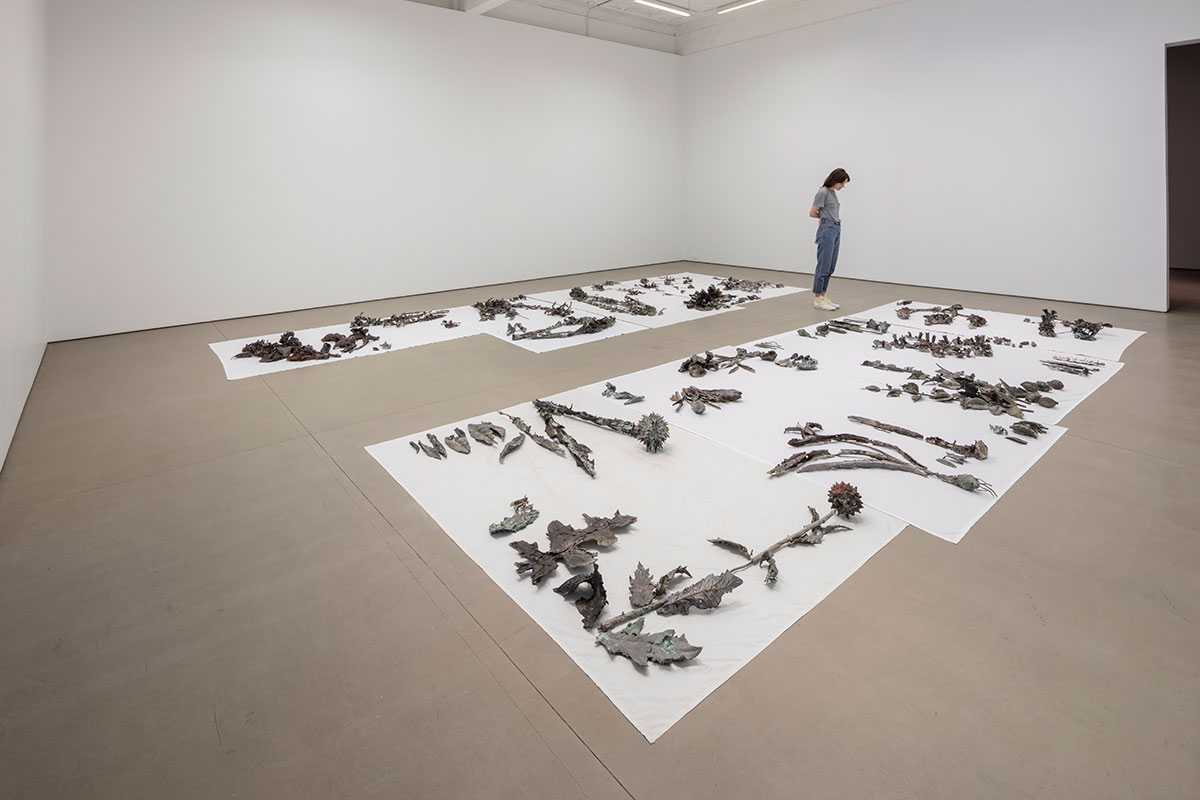
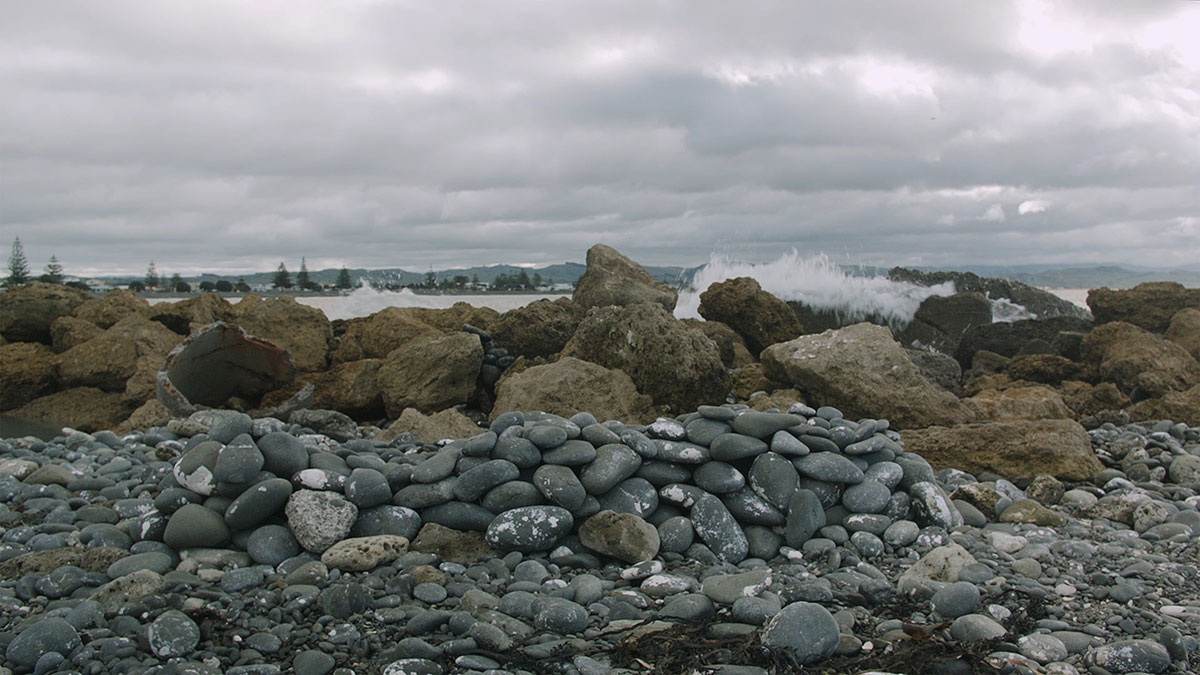
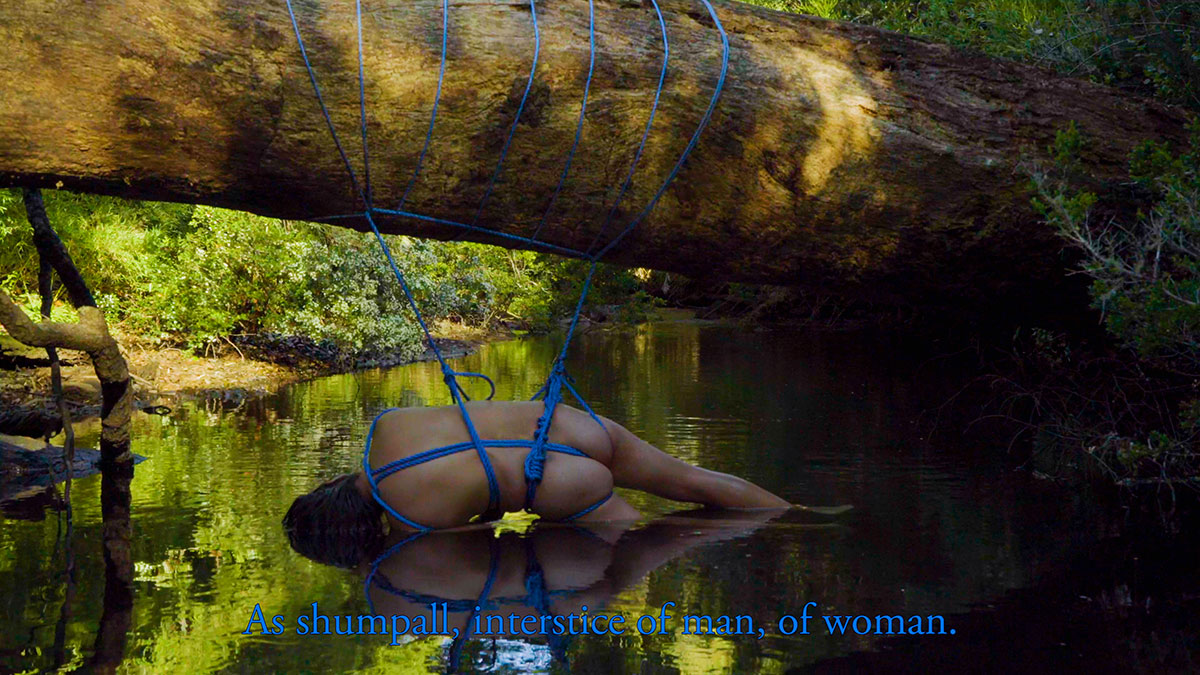
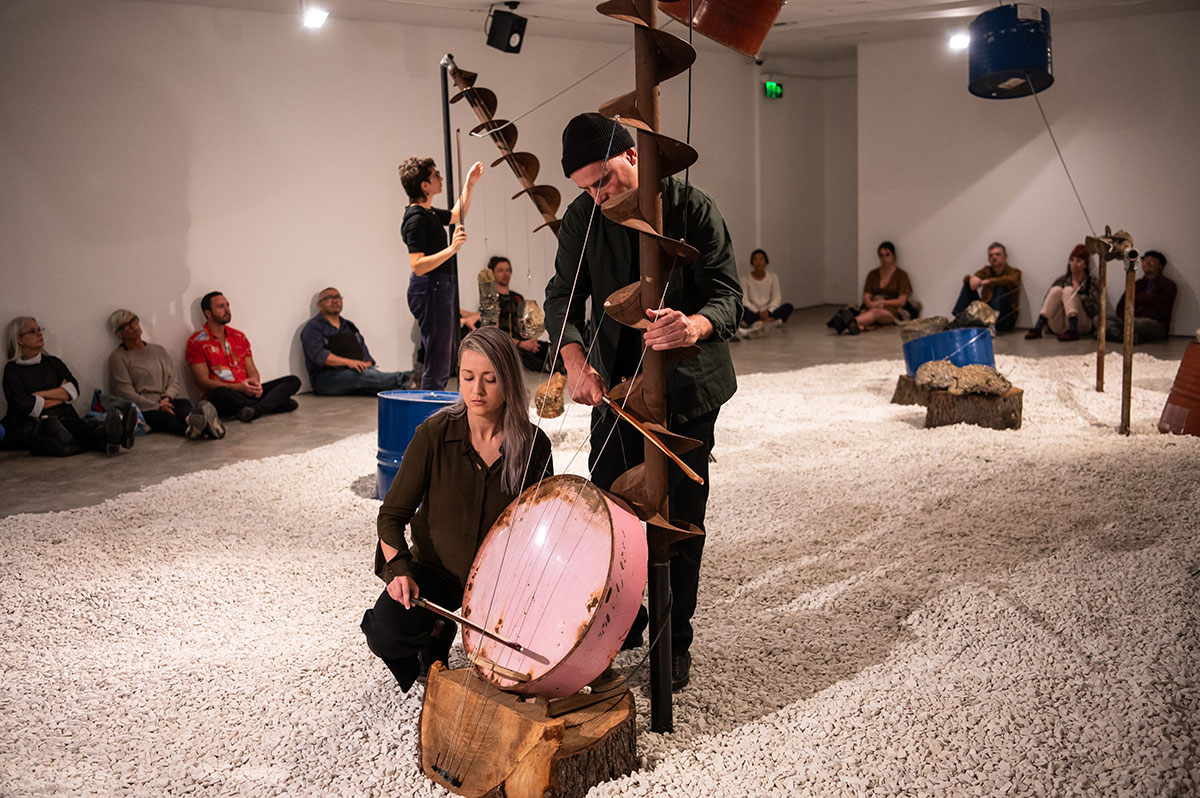
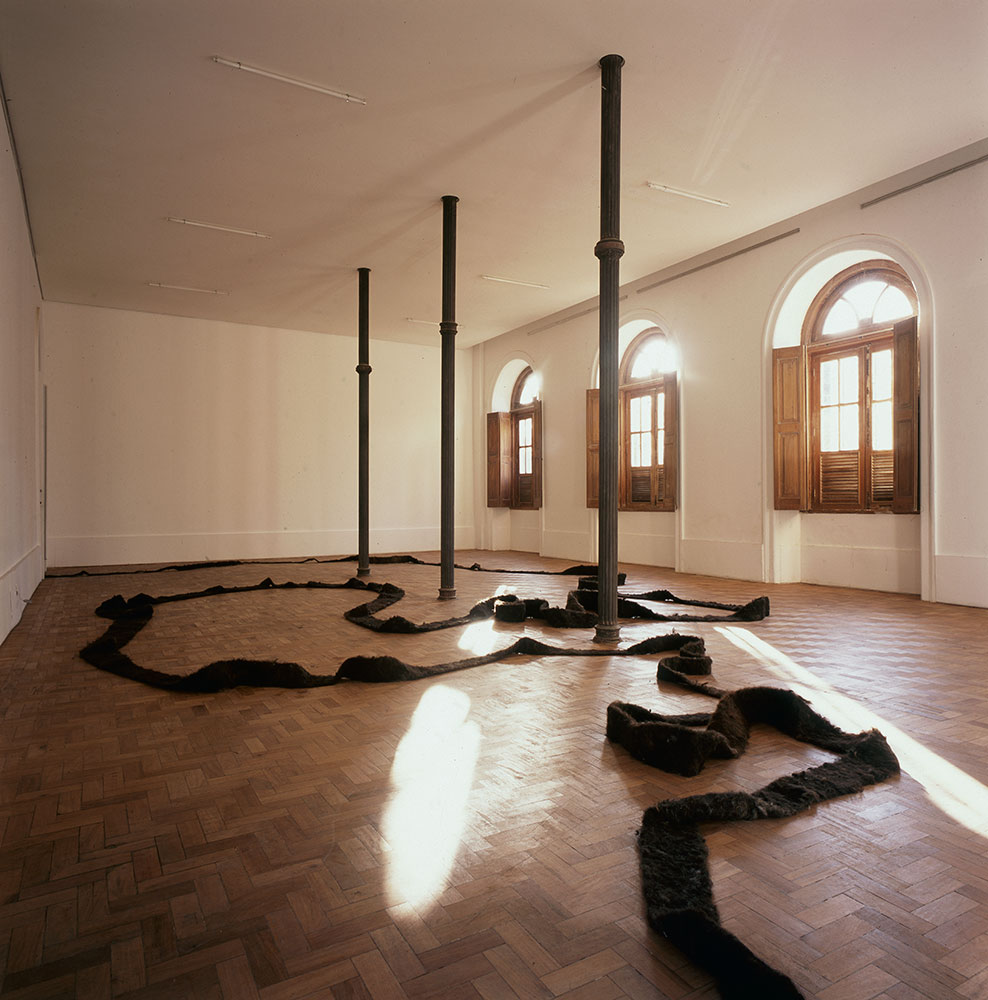
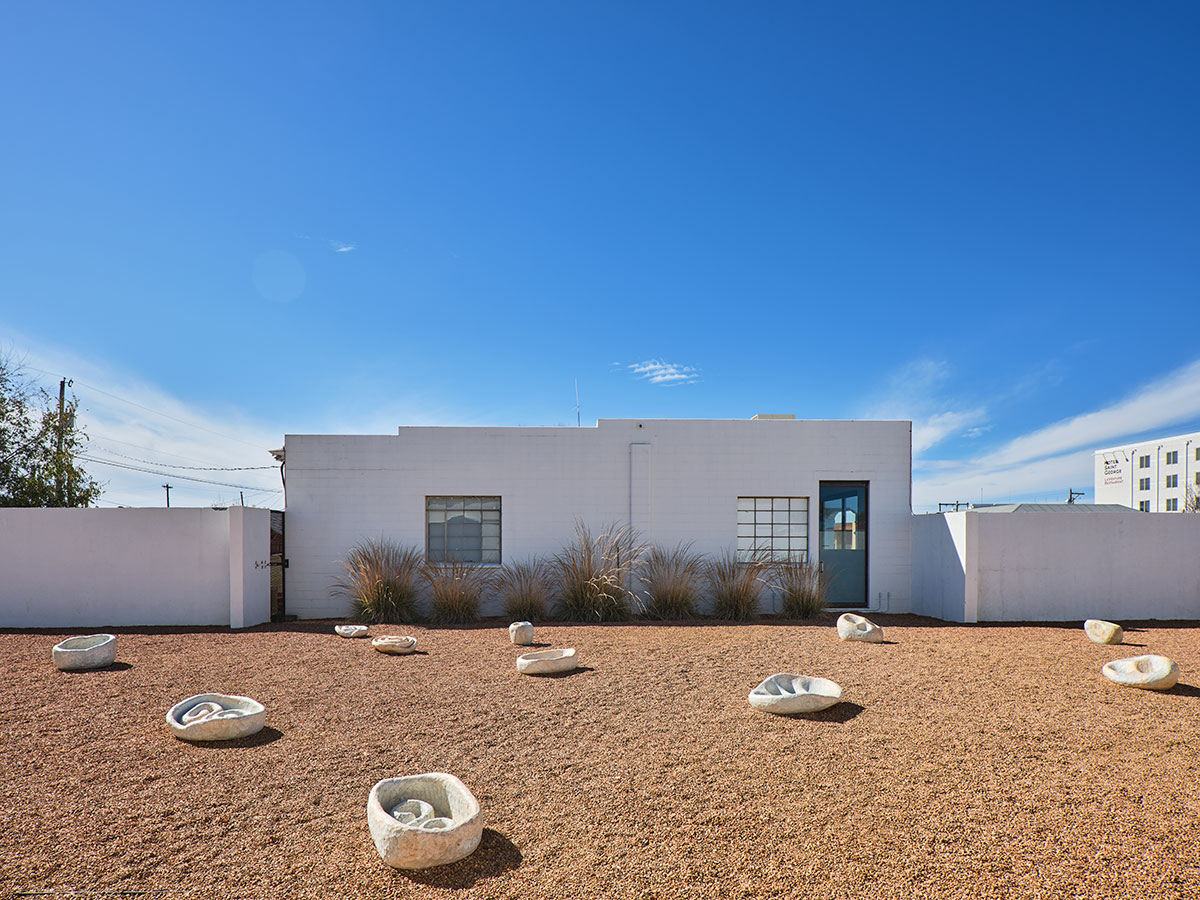
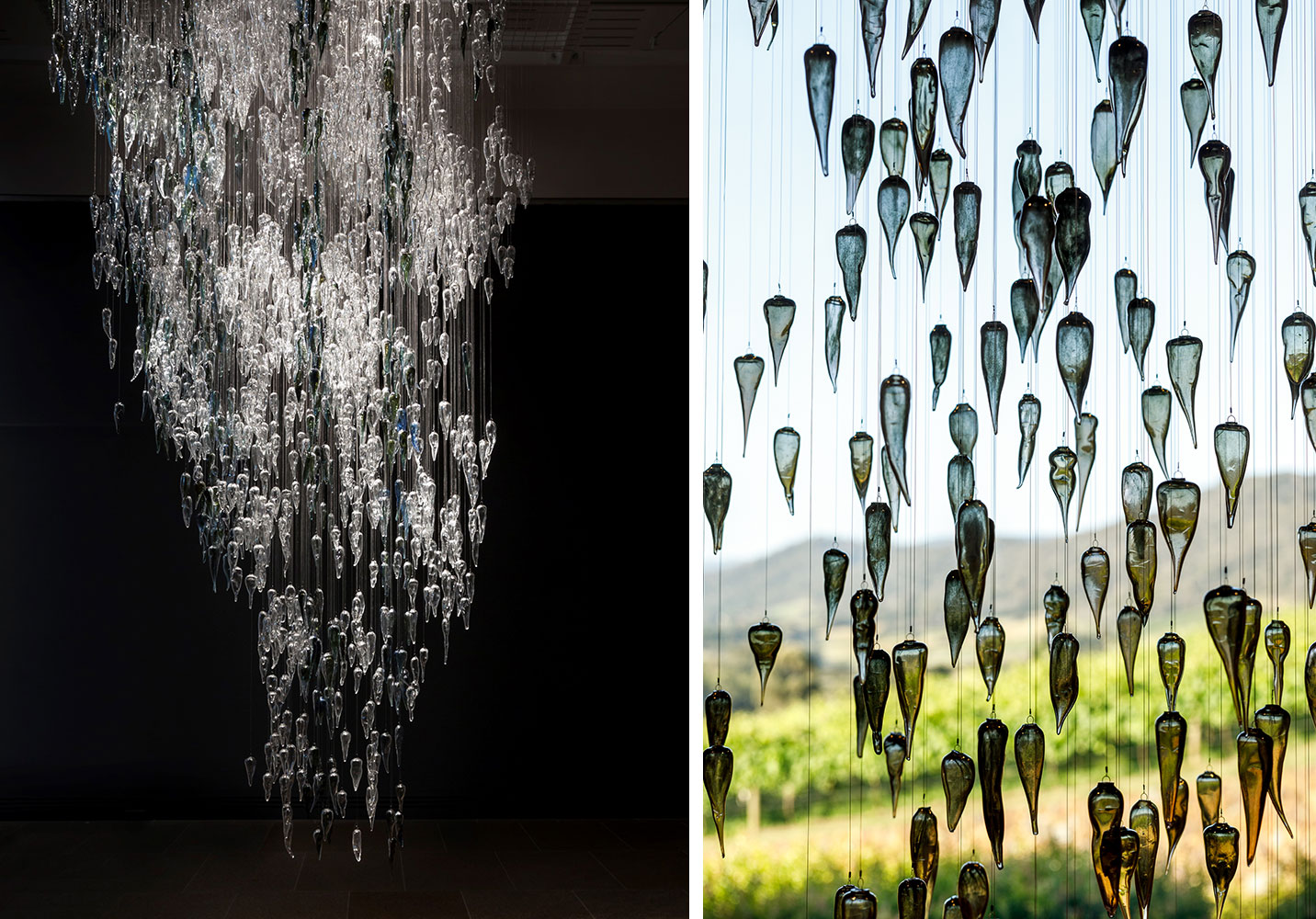
Right : Yhonnie Scarce, Cloud Chamber (detail), 2020, 1000 blown glass yams, stainless steel, reinforced wire, dimensions variable. Installation view, TarraWarra Museum of Art (Healesville). Courtesy of the artist and THIS IS NO FANTASY (Melbourne). Photo credit: Andrew Curtis
